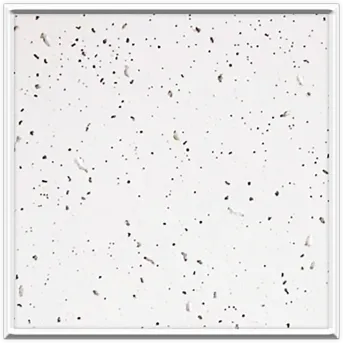- Afrikaans
- Albanian
- Amharic
- Arabic
- Armenian
- Azerbaijani
- Basque
- Belarusian
- Bengali
- Bosnian
- Bulgarian
- Catalan
- Cebuano
- Corsican
- Croatian
- Czech
- Danish
- Dutch
- English
- Esperanto
- Estonian
- French
- German
- Greek
- Hindi
- Indonesian
- irish
- Italian
- Japanese
- Korean
- Lao
- Malay
- Myanmar
- Norwegian
- Norwegian
- Polish
- Portuguese
- Romanian
- Russian
- Serbian
- Spanish
- Swedish
- Thai
- Turkish
- Ukrainian
- Uzbek
- Vietnamese
Oct . 07, 2024 08:47 Back to list
pvc vs gypsum false ceiling
PVC vs. Gypsum False Ceilings A Comprehensive Comparison
When it comes to designing and constructing interiors, false ceilings play a crucial role in enhancing aesthetics and functionality. Among the various materials available, PVC (Polyvinyl Chloride) and gypsum have emerged as popular choices. Both materials offer unique advantages and disadvantages, making the decision a significant one for homeowners and designers alike. In this article, we will explore the differences between PVC and gypsum false ceilings, considering various factors such as cost, installation, durability, aesthetics, and maintenance.
Cost
One of the primary considerations for homeowners is cost. PVC false ceilings tend to be more affordable than gypsum ceilings. This affordability is particularly appealing for budget-conscious projects. Additionally, the price of PVC panels can vary based on design and finish, but they generally remain lower than gypsum options. Gypsum ceilings, while more expensive upfront, may be justified by their longevity and versatility. For larger spaces, the cost difference can significantly impact the overall budget.
Installation
Installation efficiency is another critical factor to consider. PVC panels are lightweight and easy to handle, which means they can be installed quickly and with less labor. They can be mounted directly onto the ceiling frame, eliminating the need for complex supports. Gypsum ceilings require a framework and careful measurement, which can prolong the installation process. Moreover, the handling of gypsum boards may require skilled labor due to their weight and fragility, making the installation not only longer but potentially more costly.
Durability
Durability is an important aspect when selecting ceilings. PVC ceilings are highly resistant to moisture, making them ideal for humid environments like bathrooms and kitchens. They do not warp, rot, or get damaged by water, which ensures a long lifespan. On the other hand, gypsum ceilings are more vulnerable to water damage and can sag or crumble if exposed to excessive moisture. However, gypsum offers a certain degree of fire resistance, which can be a significant advantage in certain settings.
pvc vs gypsum false ceiling

Aesthetics
Aesthetically, both materials have their unique appeal. PVC ceilings come in a wide variety of colors, patterns, and finishes, allowing for greater design flexibility. They can mimic the look of wood, metal, or other materials, providing an array of options to suit different tastes and preferences. Gypsum ceilings usually offer a more traditional look, with the possibility of creating intricate designs and patterns through molding and plastering. While gypsum can achieve a high-end finish, modern PVC designs can easily rival this aesthetic appeal.
Maintenance
Maintenance requirements are also noteworthy. PVC false ceilings are easy to clean with a simple wipe-down using a damp cloth, as they are non-porous and resistant to staining. They do not require painting or periodic treatment, making them a low-maintenance option. In contrast, gypsum ceilings may require regular painting and more intensive cleaning, especially if dust or moisture accumulates. Over time, gypsum may need repairs or replacements, especially in high humidity areas.
Conclusion
Both PVC and gypsum false ceilings have their own sets of advantages and disadvantages, making the choice largely dependent on specific needs and preferences. PVC ceilings are more cost-effective, lightweight, and moisture-resistant, making them ideal for areas prone to humidity. Gypsum ceilings, while more expensive and potentially challenging to install, provide a classic look and are more fire-resistant.
Ultimately, the decision should be guided by factors such as budget, location, and desired aesthetics. By weighing these elements carefully, homeowners and designers can choose the ceiling material that best aligns with their vision, ensuring a beautiful and functional interior space that meets their needs for years to come. Whether opting for the modern appeal of PVC or the elegance of gypsum, a well-chosen false ceiling can transform any room into a stylish and inviting environment.
-
Transform Interiors with PVC Gypsum Ceiling: A Stylish, Durable, and Moisture-Resistant SolutionNewsMay.19,2025
-
The Smart Interior Upgrade: Discover the Durability and Versatility of Gypsum Ceiling Access Panel SolutionsNewsMay.19,2025
-
The Smart Choice for Interior Design: Discover the Value of PVC Gypsum Ceiling SolutionsNewsMay.19,2025
-
Mineral Fiber Ceiling Tiles: The Smart Blend of Performance and AestheticsNewsMay.19,2025
-
Mineral Fiber Ceiling Tiles: The Superior Choice Over Gypsum for Sound and Fire SafetyNewsMay.19,2025
-
Mineral Fiber Ceiling Tiles: Eco-Friendly Strength and Style for Every CeilingNewsMay.19,2025







